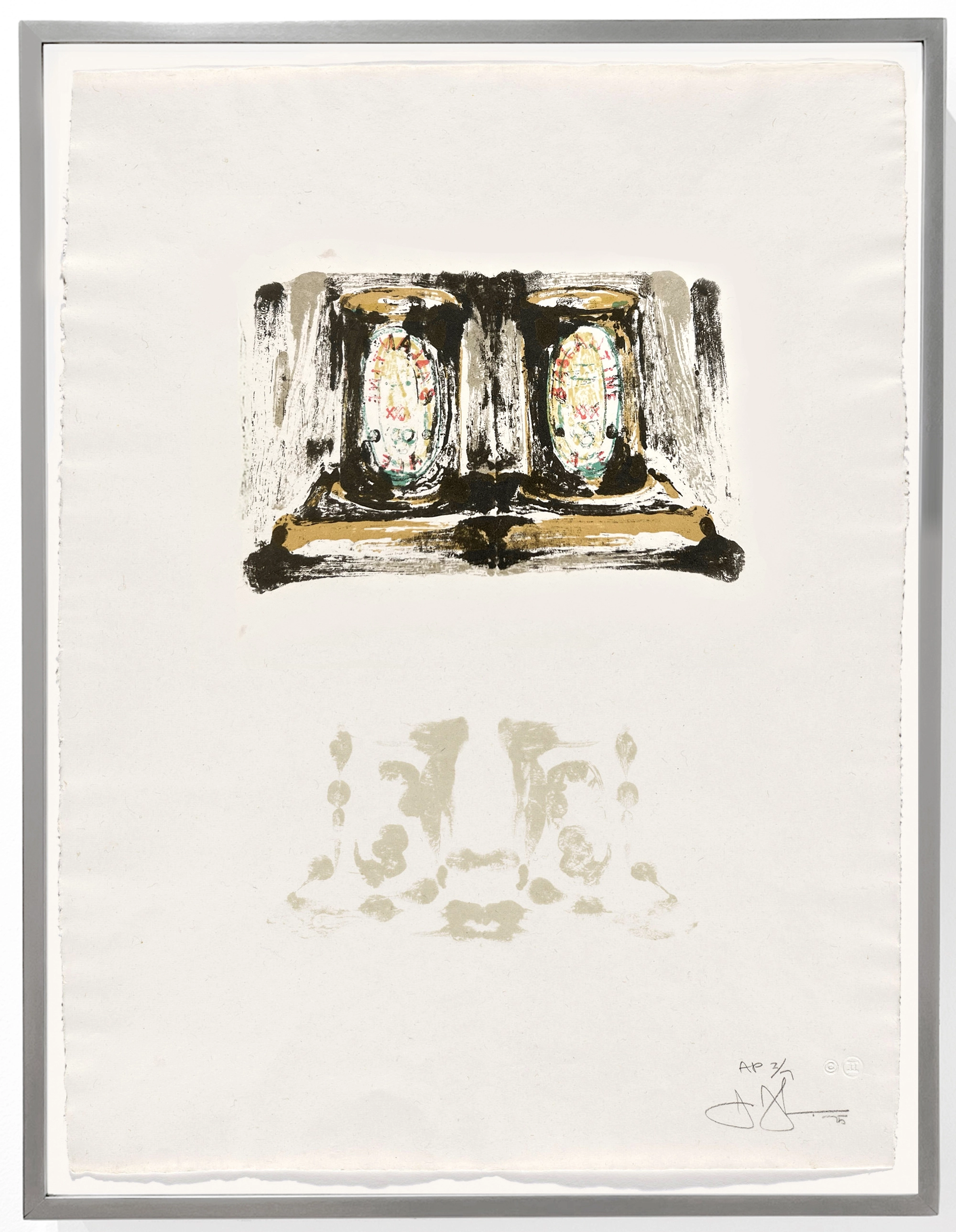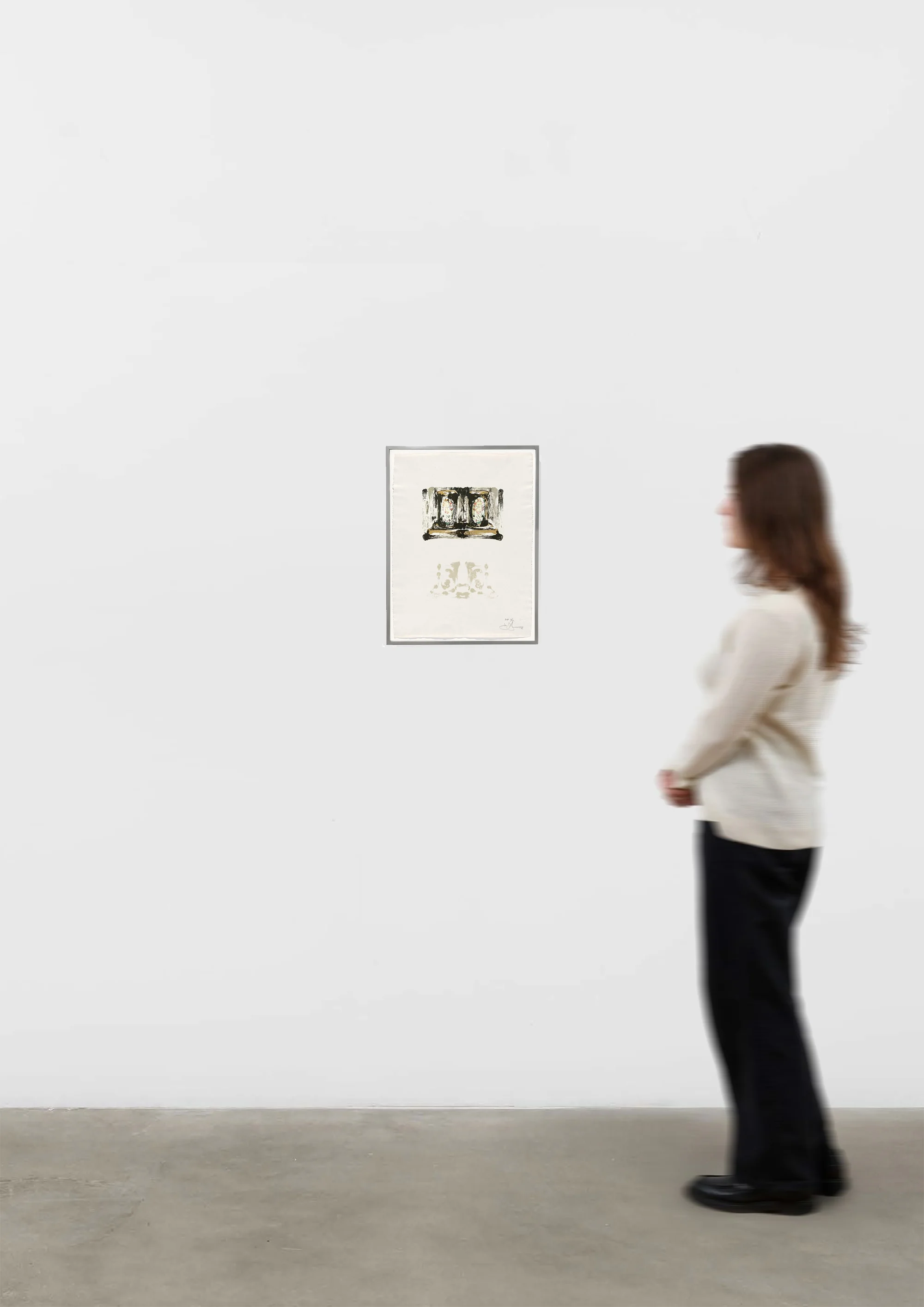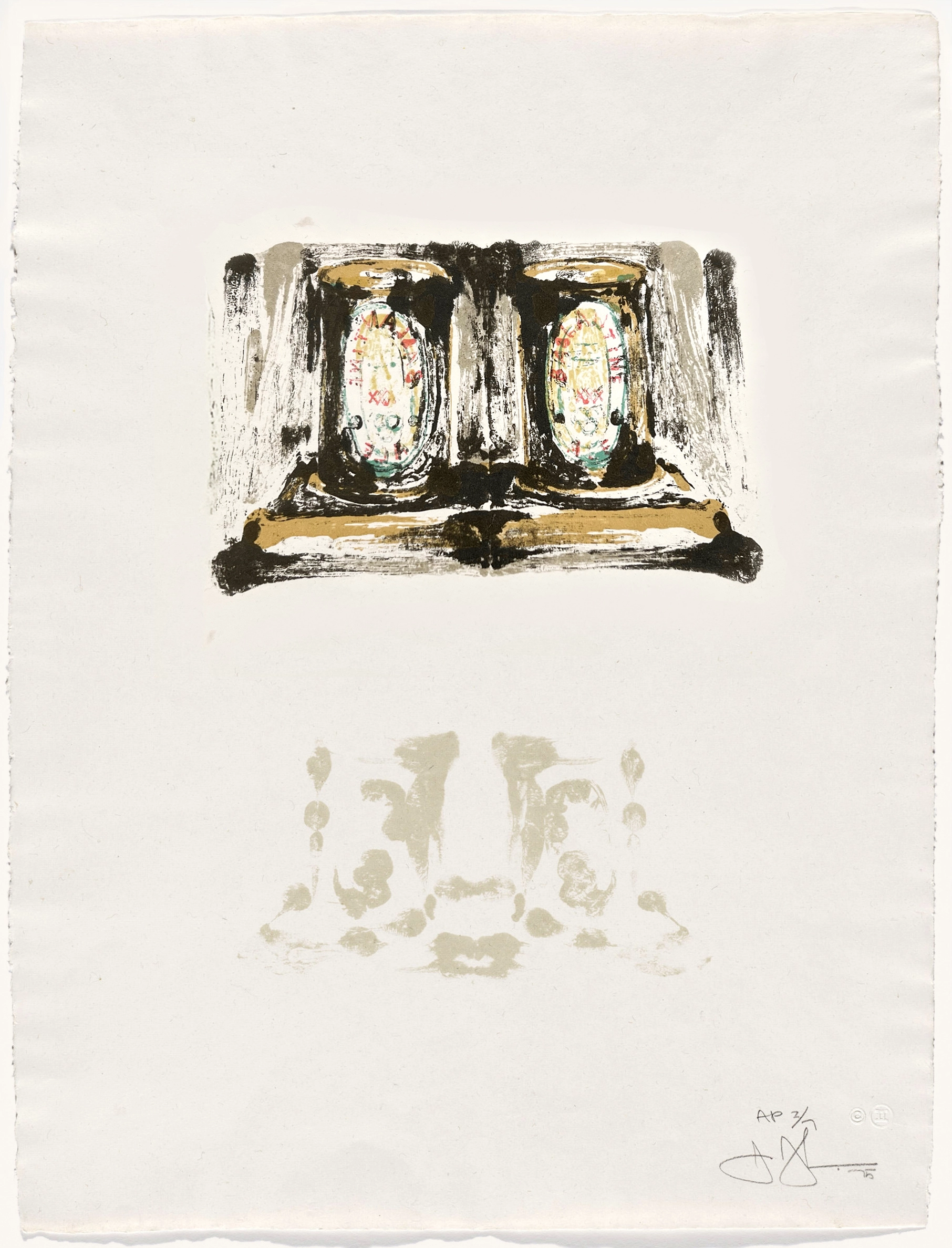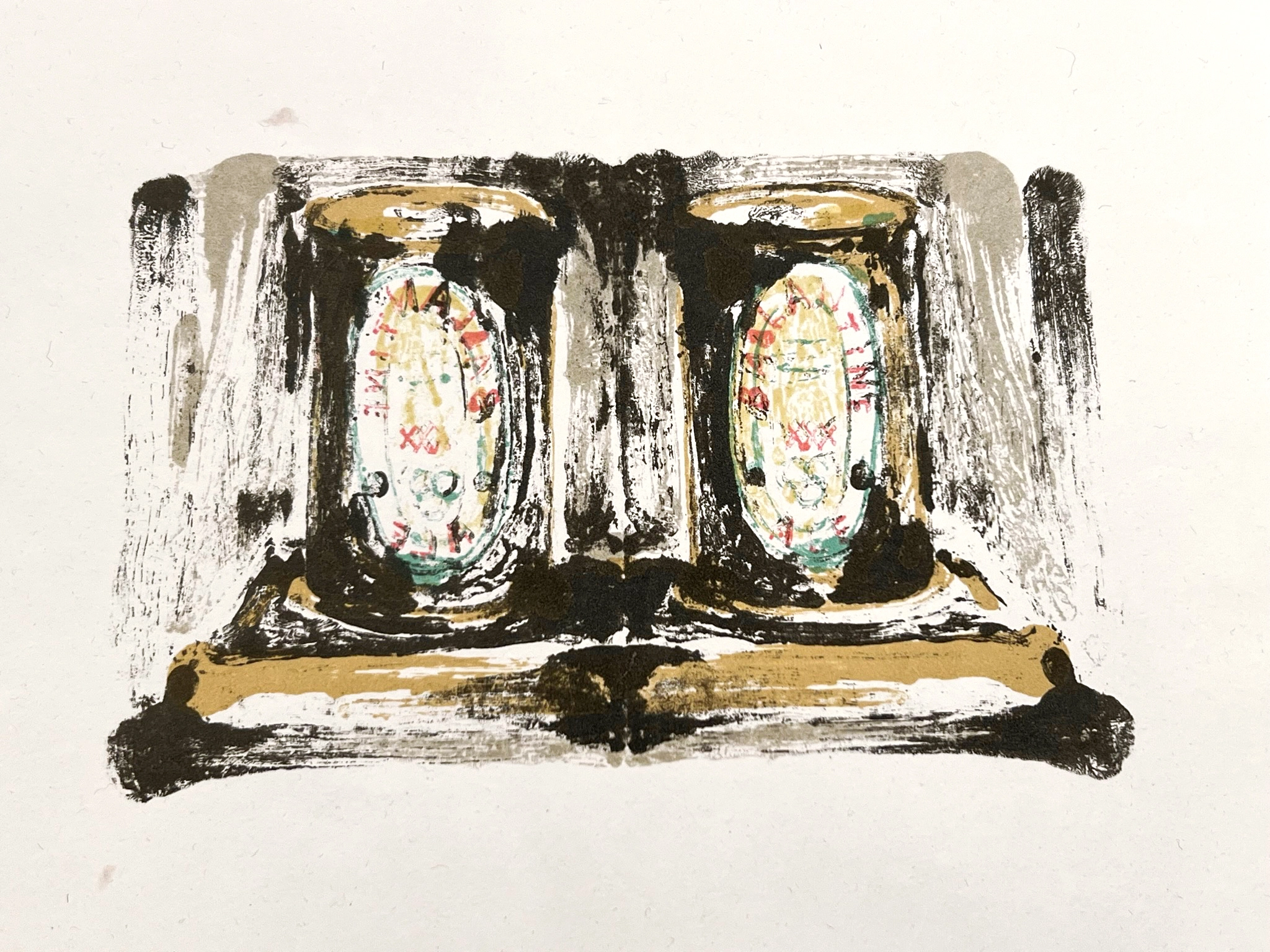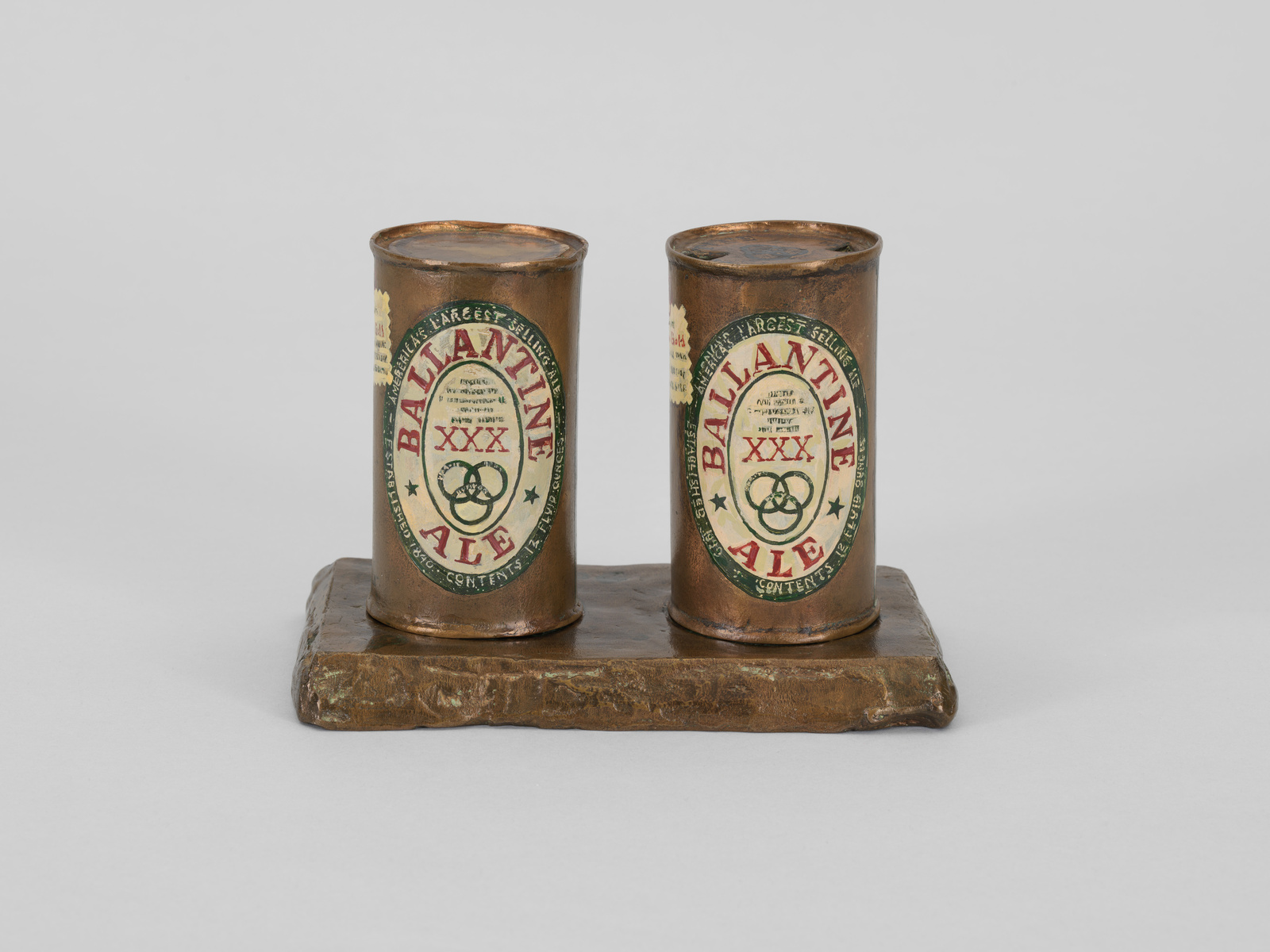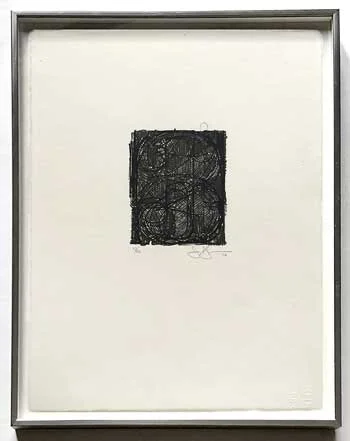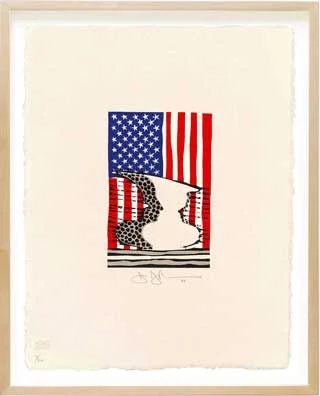Jasper Johns
Ale Cans (ULAE 152), 1975
lithograph printed in colors on John Koller paper
paper: 18 7/8 by 14 3/8 inches
edition: 14 with 7 AP's & 1 PP
signed, dated and numbered lower right in pencil
published by Gemini G.E.L., Los Angeles with their inkstamp on the verso, 1975
printed by Dan Freeman, Anthony Zepeda
© 2024 Jasper Johns / Licensed by VAGA at Artists Rights Society (ARS), NY
paper: 18 7/8 by 14 3/8 inches
edition: 14 with 7 AP's & 1 PP
signed, dated and numbered lower right in pencil
published by Gemini G.E.L., Los Angeles with their inkstamp on the verso, 1975
printed by Dan Freeman, Anthony Zepeda
© 2024 Jasper Johns / Licensed by VAGA at Artists Rights Society (ARS), NY
Literature
Richard Field, Jasper Johns Prints 1970-1977, Wesleyan University, Middletown, 1978, Catalogue Reference 203, p. 100, another impression reproduced in black and white
Richard Field, The Prints of Jasper Johns 1960-1993: A Catalogue Raisonne, ULAE, New York, 1994, Catalogue Reference ULAE 152, n.p., another impression reproduced in full-page color.
Selected Museum Collections
National Gallery of Art, Washington D.C.
Museum of Modern Art, New York
National Gallery of Art, Australia
